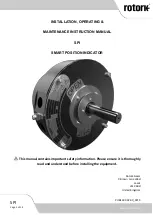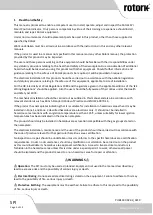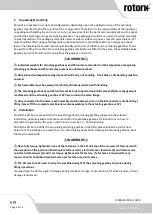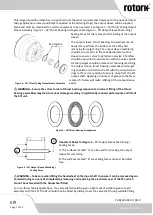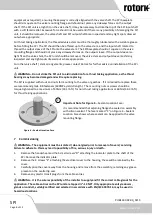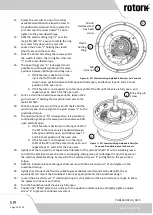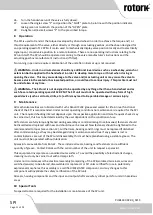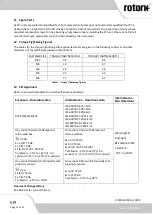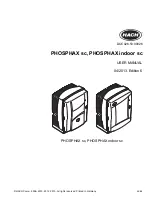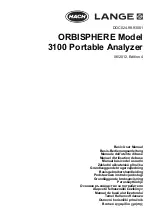
Page 11 of 12
SPI
www.rotork.com
PUB132-002-00_0219
26.
Turn the handwheel until the valve is fully closed.
27.
Loosen the single screw
“
F
”
and position the “SHUT” plate to be in line with the position indicator,
taking care not to disturb the position of the “OPEN” plate.
28.
Re-tighten all 4 small screws
“
F
”
to the prescribed torque.
8
Operation
The SPI is used to transmit the torque developed by a hand wheel in order to achieve the torque and / or
thrust requirement of the valve, either directly or through an actuating gearbox, and has been designed for
an operating speed of 12 RPM. It is also used to mechanically display valve position locally and to electrically
signal open / closed valve position to a remote location. There are no operating instructions relating to the
SPI unit itself. The SPI should be operated according to the valve manufacture
r’
s instructions and the
actuating gearbox manufactu
rer’s instructions (if fitted).
No running in period is required. Calibration of the unit after initial set up is not required.
⚠
WARNING
–
Under no circumstances should any additional lever device such as a wheel-key, wrench or
extension bar be applied to the handwheel in order to develop more torque or thrust when closing or
opening the valve. This may cause damage to the valve and/or actuating unit or may cause the valve to
become stuck in the seated or back-seated position, or could lead to serious injury. This practice must not
be undertaken at any time.
⚠
WARNING
–
The SPI unit is not designed to be operated by anything other than a hand wheel and as
such has a rated operating speed of 12 RPM. The SPI unit must not be operated with any form of high
speed device (such as air tools, drills, etc.) as this may lead to irreparable damage or serious injury.
9
Maintenance
All mechanical cavities are lubricated with Fuchs Renolit CLX2 grease and sealed for life. Annual functional
check of the SPI is recommended. Under normal operating conditions no maintenance is required for the SPI
unit. The required checking interval depends upon the respective application and more frequent checks may
be carried out, this has to be determined by the user dependent on the conditions of use.
All fasteners are fully torque tightened during assembly or commissioning. Once loosened, fasteners should
be discarded and replaced with new and should never be reused. New fasteners should be tightened to the
recommended torques (see section 12). Furthermore, bearings and O-rings must be replaced if disturbed
after commissioning, as they may be damaged during maintenance activities. If any grease is lost or
contaminated as a result of the SPI unit disassembly, this must be replenished using a suitable grease. The
unit must not be operated without lubrication.
Spares kits are available from Rotork. These include all seals, bearings and fasteners and a sufficient
quantity of grease. Contact Rotork with the serial number of the unit to request a spares kit.
This equipment incorporates an anodized outer surface. To avoid the possibility of electrostatic charges,
cleaning must only be carried out with a damp cloth.
Under no circumstances is the electrical assembly (comprising of the PCB, soldered terminals, wires and
switches/sensors) to be altered, disassembled or replaced. For SPI units certified for use in potentially
explosive atmospheres, this assembly is a certified IECEx/ATEX component, and any changes to this
component will invalidate the safety certification of the SPI unit.
All seals, housing components and the input and output shafts are safety critical parts for units in hazardous
areas.
10
Special Tools
No special tools are required for the installation or maintenance of the SPI unit.

